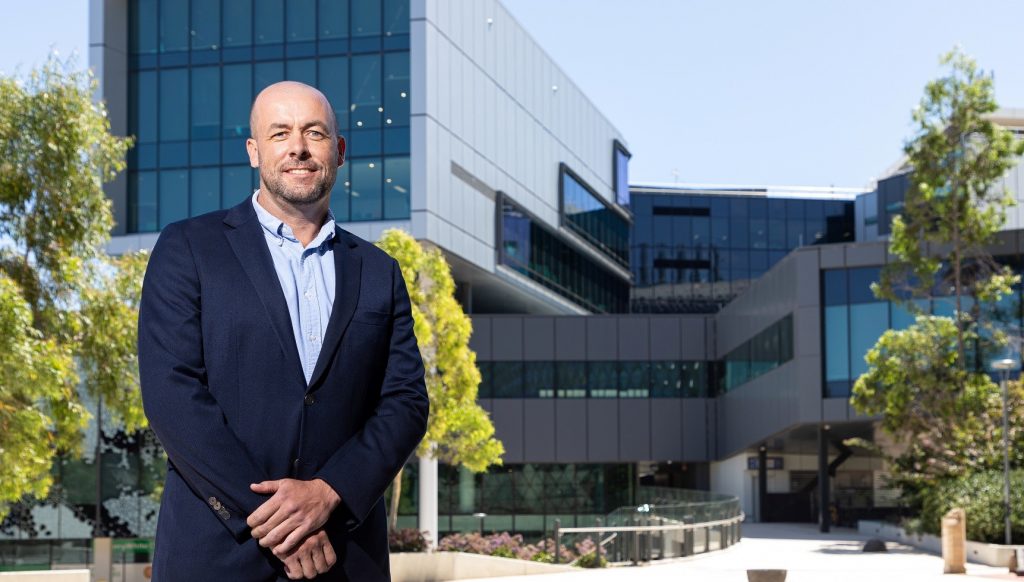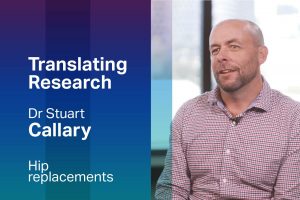The long-term health of the 50,000 people who have undergone hip replacement each year will be enhanced thanks to a share of a $1.7m worth of research grants from The Hospital Research Foundation (THRF) Group.
Dr Stuart Callary and his colleagues, including the Royal Adelaide hospital’s (RAH) head of orthopaedics, Professor Bodgan Solomon, are continuing a multifaceted project that aims to improve the functional outcomes of patients who have undergone hip replacement surgery.
Addressing a need
Five per cent of primary hip replacements fail within ten years while 30 per cent of revision hip replacements fail with five years. Dr Callary’s research is aiming to utilise the best imaging and the best functional outcome measures available together within one project in order to inform the best surgical and rehabilitation protocols.
His team’s work involves the combination of a suite of measurements including patient activity monitoring with wrist-worn devices, gait analysis, and measurement of hip stability by analysing patient x-rays
“We can measure very accurate implant movement at two years and determine whether that implant will fail long term,’ he said.
“So you’re getting a result at two years rather than waiting 10, 15 [or] 20 years for the outcome.”
While this work has already improved patient outcomes, the current process to measure hip implant stability on x-ray images is time-consuming and relies on x-rays that are not available to all patients. The grant will help fund the next step in the work which is to develop software to automate the process and to use widely available clinical x-rays. This will allow them to save hours of work and measure significantly larger cohorts of people.
Dr Callary and his colleagues are hoping to have a useful beta-version of the software within 12 months. Then, using machine learning, they aim to train the software to conduct large volumes of assessments. The long-term goal is to be able to produce live in-clinic measurements of hip stability when patients have their routine clinical x-rays.
Partnerships make it possible
This research builds on work Dr Callary started during a Mary Overton Early Career Research Fellowship from the Royal Adelaide Hospital Research Fund. It allowed him to start these projects and build his own, and his team’s, track record and ultimately made him eligible for the Early and Mid-Career Research Fellowship from THRF.
“Both funds have been vital for me to continue on these research projects,” Dr Callary said.
Dr Callary praised the partnerships and collaborations that are driving this research and improving hip implant patient outcomes.
“I’m very lucky that our department of orthopaedics at the RAH is so closely linked with clinical academics and researchers from the University of Adelaide.
“That has allowed us to do these multifaceted projects. We have international experts working together right next to each other, even though they’re from different fields.”
More about the grant
To find out more about The Hospital Research Group grants head to www.hospitalresearch.org.au



